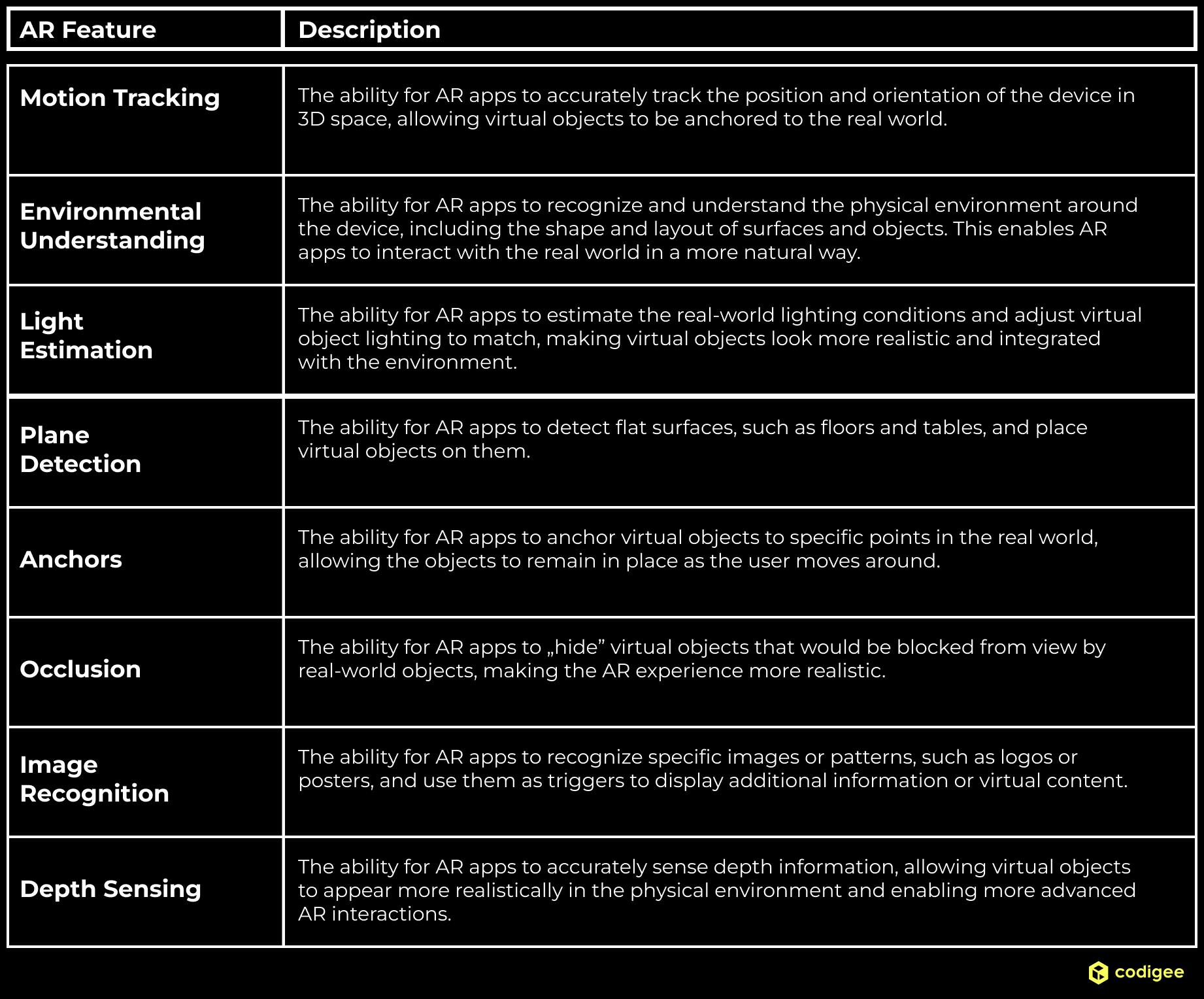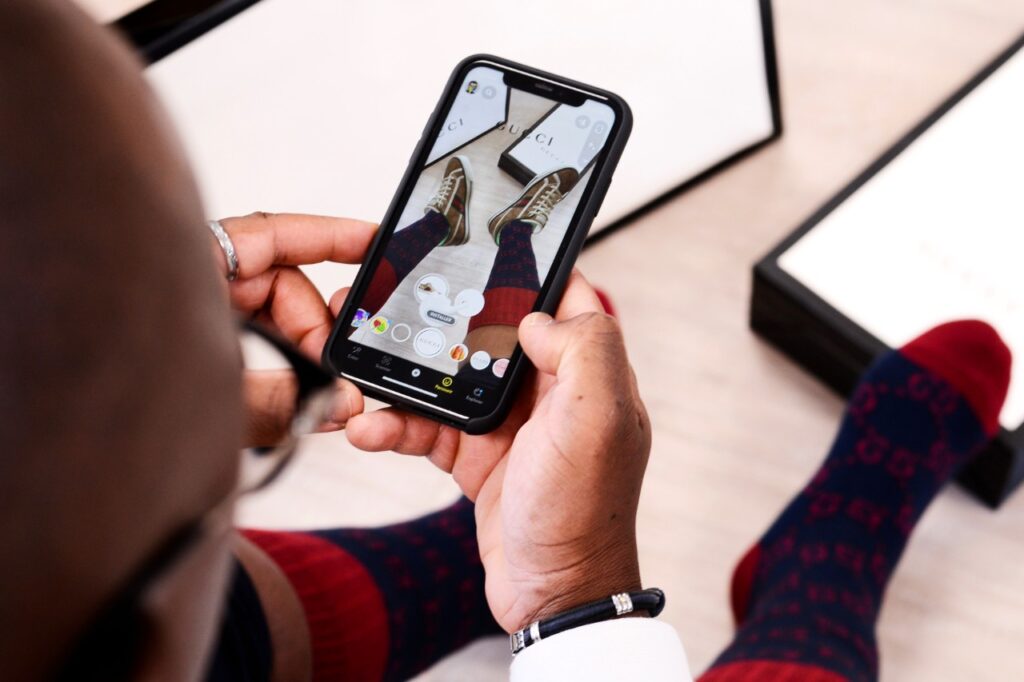Blog

AR in Mobile Apps: A Comprehensive Guide
Introduction to AR in Mobile Apps: The Future of Mobile Technology
In recent years, AR technology has experienced a surge in popularity, and its growth is expected to continue in 2024 and beyond, particularly in the realm of mobile app development. The increasing availability of AR hardware and software, combined with consumers’ growing appetite for immersive experiences, is fueling the growth of AR/VR mobile apps.
According to a recent report by MarketsandMarkets, the global AR market size is projected to reach USD 72.7 billion by 2024, up from USD 12.0 billion in 2020, representing a CAGR of 58.3% during the forecast period. This significant growth can be attributed to the rising demand for AR technology in a wide range of industries, including gaming, entertainment, healthcare, education, and retail.
Moreover, the integration of AI and IoT technologies is expected to further enhance the capabilities of AR mobile apps, making them more interactive, intuitive, and engaging. The blending of AR and AI technologies can create personalized experiences that cater to the unique needs and preferences of individual users, leading to happier and more satisfied customers.
Therefore, businesses that invest in AR/VR mobile apps stand to gain a competitive advantage in the market. With advancements in AR technology and the integration of AI and IoT, AR mobile apps are poised to revolutionize the way we interact with the digital world, creating a new era of immersive and personalized experiences for users.
Source: Twitter @sergeyglkn
How AR Works in Mobile Apps: A Technical Overview
The technical aspects of how AR works in mobile apps are fascinating. AR technology uses various components, such as sensors, cameras, and processors, to create an augmented reality experience for the user.
The first and most crucial component of AR technology is the camera. The camera captures the user’s environment in real-time and sends it to the AR software. The software processes the image and identifies real-world objects, their position, and orientation.
The next essential component is the sensors. These sensors include an accelerometer, gyroscope, and magnetometer. The accelerometer detects the device’s movement, the gyroscope detects orientation, and the magnetometer detects the device’s position in relation to the earth’s magnetic field. The combination of these sensors provides the device with accurate information on its position and orientation.

Source
Once the camera and sensors have captured the environment, the AR software overlays virtual content onto the real-world objects. This content can be in the form of 3D models, animations, or text. The software uses algorithms and computer vision to ensure that the virtual content accurately aligns with the real-world objects and maintains their position and orientation.
AR technology also uses markers or trackers to identify specific objects or surfaces and overlay content on them. Markers can be images or QR codes that the camera identifies and uses to anchor virtual content onto a specific location or object.
In summary, AR technology in mobile apps uses a combination of sensors, cameras, and software to create an immersive experience that overlays virtual content on the real world. By accurately detecting and processing the environment, AR technology creates a seamless and interactive experience for the user, leading to increased engagement and user satisfaction.
All this summarized:

Implementing AR in Mobile Apps: Tools and Frameworks to Consider
There are several tools and frameworks available to developers for implementing AR in mobile apps. Let’s take a look at some of the most popular ones:
ARKit:
Developed by Apple for iOS devices, ARKit provides developers with a set of tools and APIs to create AR experiences, including motion tracking, scene understanding, and light estimation. ARKit also includes a suite of tools for creating 3D models, animations, and textures, making it an excellent choice for creating high-quality AR experiences.
ARCore:
Developed by Google for Android devices, ARCore provides similar functionalities to ARKit, including motion tracking, environmental understanding, and light estimation. ARCore also includes a suite of tools for creating 3D models and animations, making it a great choice for creating AR experiences on Android devices.
Unity:
Unity is a game development engine that includes support for AR, allowing developers to create immersive and interactive AR experiences quickly. Unity also provides support for both ARKit and ARCore, making it an excellent choice for creating cross-platform AR experiences.

Vuforia:
Vuforia is an AR platform that provides tools for image recognition, 3D object recognition, and text recognition, making it a great choice for creating AR experiences in retail and marketing.
Wikitude:
Wikitude is another AR platform that provides tools for creating location-based AR experiences.
MaxST:
MaxST is a Korean-based AR development company that provides a suite of tools for creating AR experiences on Android devices.
Challenges and Limitations of AR in Mobile Apps: What You Need to Know
Here are some of the most significant challenges and limitations of AR in mobile apps:
Limited Hardware Capabilities:
One of the most significant limitations of AR in mobile apps is the limited hardware capabilities of mobile devices. AR requires a lot of processing power, memory, and storage, which can quickly drain the battery of mobile devices. As a result, developers need to optimize their AR applications to run smoothly on mobile devices without draining the battery.

Source
Lack of Standardization:
Another challenge of AR in mobile apps is the lack of standardization across devices and platforms. Different devices have different capabilities, and not all devices support the same AR features, making it challenging for developers to create cross-platform AR experiences.
Environmental Limitations:
AR heavily relies on environmental information, such as lighting conditions and camera quality. Poor lighting conditions or low-quality cameras can negatively impact the accuracy and quality of AR experiences.

Source
User Acceptance:
While AR is gaining popularity, there is still a considerable portion of users who are not familiar with the technology or do not see its value. As a result, developers need to create AR experiences that are intuitive and provide value to users to encourage adoption.
Cost:
Finally, implementing AR in mobile apps can be costly. It requires specialized skills and expertise, which can be expensive to acquire. Additionally, creating high-quality AR experiences often requires extensive resources, such as 3D models and animations.
Conclusion: The Potential of AR in Mobile Apps.
The pandemic has influenced more organizations to invest in augmented reality technology, and more people are becoming aware of augmented reality beyond simple filters.
AR has already been integrated into a variety of mobile apps, including games, e-commerce, education, and healthcare. It has proven to be an effective way to enhance user engagement and create a more immersive experience. By leveraging AI, AR can also become more personalized and context-aware, providing users with relevant and useful information.
As the adoption of AR technology continues to grow, we can expect to see more innovative uses of AR in mobile apps. The potential for AR in education, training, and simulation is immense, as it can provide learners with a safe and immersive environment to practice and experiment. AR can also transform the way we shop and interact with products, enabling customers to try on clothes or see furniture in their own home before making a purchase.
In conclusion, AR has the potential to change the way we interact with mobile apps and the world around us. By combining AI with AR technology, we will be able to create the most revolutionary solutions that can be used in everyday life.
Get latest insights, ideas and inspiration
Take your app development and management further with Codigee
Let's make something together.
At Codigee, we value transparency, efficiency, and simplicity. No overengineering. No wasted time.
Just straight-up execution.
We are obsessed.
Every billion-dollar company started with one decision, one step, one iteration. The key? Taking action and executing fast.

